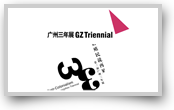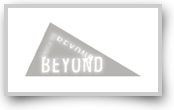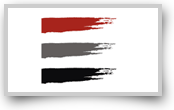XuBing

The Mustard Seed Garden Landscape Scroll
Going from manual to scroll was like playing video in reverse. Shen Xinyou of the Qing Dynasty condensed the classical configurations of master painters into a book. I in turn placed these classical configurations into a landscape painting, as in a backwards induction in mathematics. My interest was in seeing what results this backwards induction in yield. Such experiments help me deepen my understanding of the semiotic nature of Chinese art. Subject matter in Chinese painting is drawn from a limited repertoire—the “Four Gentlemen” of plum, orchid, bamboo, and chrysanthemum and landscapes with symbolic pavilions and conventionalized figures. In the imagination of literati painters, nature with human figures was a way for the literati to reflect on what human presence in nature should be. This image is rather like something “written” with pre-given signs.
The Mustard Seed Garden Landscape Scroll is
in the hand scroll format. The Chinese literati did not look at paintings hung
up, but carried them around in hand scrolls to view wherever they pleased.
Unfolded segment by segment, a hand scroll is somewhat similar to a comic book.
The Mustard Seed Garden Landscape Scroll
moves from the countryside to the outskirts of a city, from wilderness to a
village, and finally to forested mountains. Carefully embedded within the
composition are many small human figures. I followed one principle in creating
this work: every image taken from the Mustard Seed Garden Landscape Scroll is
recreated in its original dimensions. This creative constraint highlights the
significance of the manual as a dictionary and reference book and, at the same
time, further distances my work from the freedoms of a figurative painting
surface. Also worth mentioning is that after finalizing the composition, I
invited a professional carver to make the blocker rather than carving them
myself. I was not acting as a creative printmaker. In premodern
In the past century or two, the effects of Western culture on the development of the world’s civilizations have naturally concerned and inspired the Chinese. Today our modes of living and thinking are considerably influenced by the West. In intellectual outlook, however, every people or culture is inextricably bound to such fundamental factors as ethnicity, customs, and blood, which are difficult to change. Arthur Smith, an American missionary, wrote the book Chinese Characteristics a hundred years ago. The habits he described have not changed essentially between then and now. The written language is a good example. The block-like Chinese characters entail reading and viewing experiences disparate from those of alphabetic scripts. Although we use modern Chinese now, its pictographic nature still profoundly informs our reading. When we read the characters山水(landscape. lit. ”mountain and water”), how do the shape of the mountain in 山and the patterns of water in 水affect our thinking? People all say this is the age of reading images. The Chinese have been reading imaged for thousands of years. Ultimately, all this cannot but affect a people’s ways of thinking about and knowing the world.
But we should know that tradition is powerless if unanimated. This exhibition and all its participating artists are involved in precisely this “animating” work. How to confront tradition is an abiding issue in any society. Our lives and creations today will be tomorrow’s tradition, and people in the future will likewise face the question of how to treat or absorb what we leave behind. The essence of Chinese thought, attitudes, and worldviews, like that of any distinguished civilization, nourishes and inspires us in our search for better modes of culture.
XuBing
December, 2010



